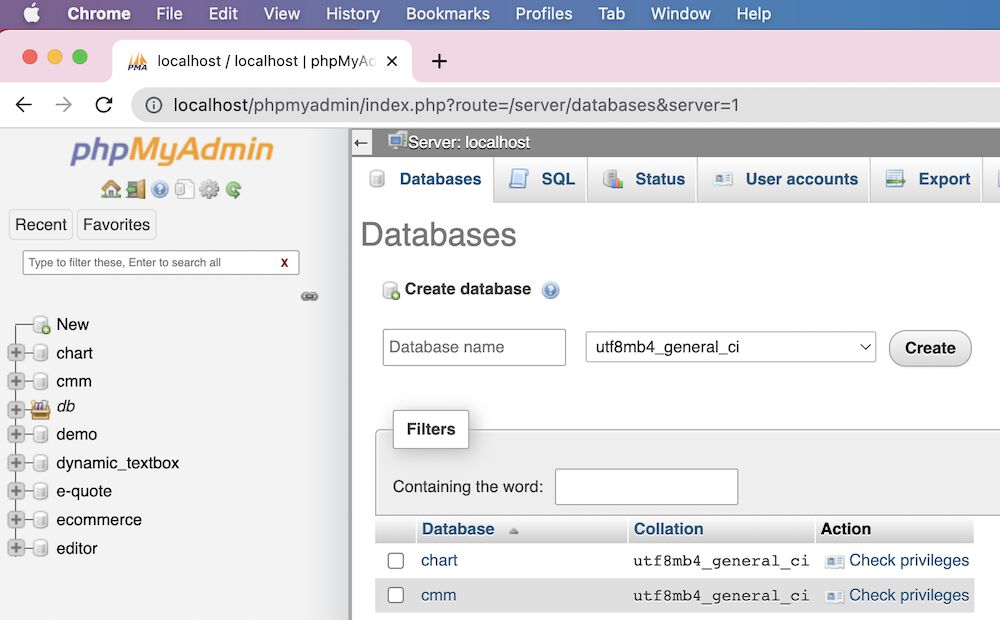How to Create a MySQL Database in phpMyAdmin
Creating a MySQL database in phpMyAdmin is a straightforward process that allows you to store and manage your data efficiently. Whether you are a beginner or a seasoned web developer, mastering the art of creating databases is crucial for building dynamic websites and applications. In this article, we will walk you through the steps to create a MySQL database in phpMyAdmin.
Step 1: Access phpMyAdmin
First, you need to access phpMyAdmin, which is a web-based tool for managing MySQL databases. To do this, log in to your web hosting control panel, such as cPanel, and locate the phpMyAdmin icon. Click on the icon to launch phpMyAdmin.
Step 2: Create a New Database
Once you have accessed phpMyAdmin, you will see a list of databases on the left-hand side of the screen. To create a new database, click on the “New” button located at the top of the page. Enter a name for your database in the field provided and click the “Create” button.
Step 3: Define Database Tables
After creating the database, you can start defining the tables that will store your data. To do this, click on the name of the database you just created. Then, click on the “Structure” tab followed by the “Create Table” button. Enter a name for the table and define its columns along with their respective data types.
Step 4: Set Primary Key and Indexes
Once you have defined the columns for your table, you can set a primary key to uniquely identify each row. Click on the “Indexes” tab and then click on the “Add Index” button. Select the column you want to set as the primary key and click the “Save” button.
Step 5: Save Your Changes
After setting the primary key and any additional indexes, click on the “Save” button to save your changes. Your new database and table are now ready to use for storing and managing your data.
Conclusion
Creating a MySQL database in phpMyAdmin is a fundamental skill for anyone working with databases. By following the steps outlined in this article, you can create and set up a database with tables efficiently. Remember to always back up your databases regularly to prevent any data loss.
